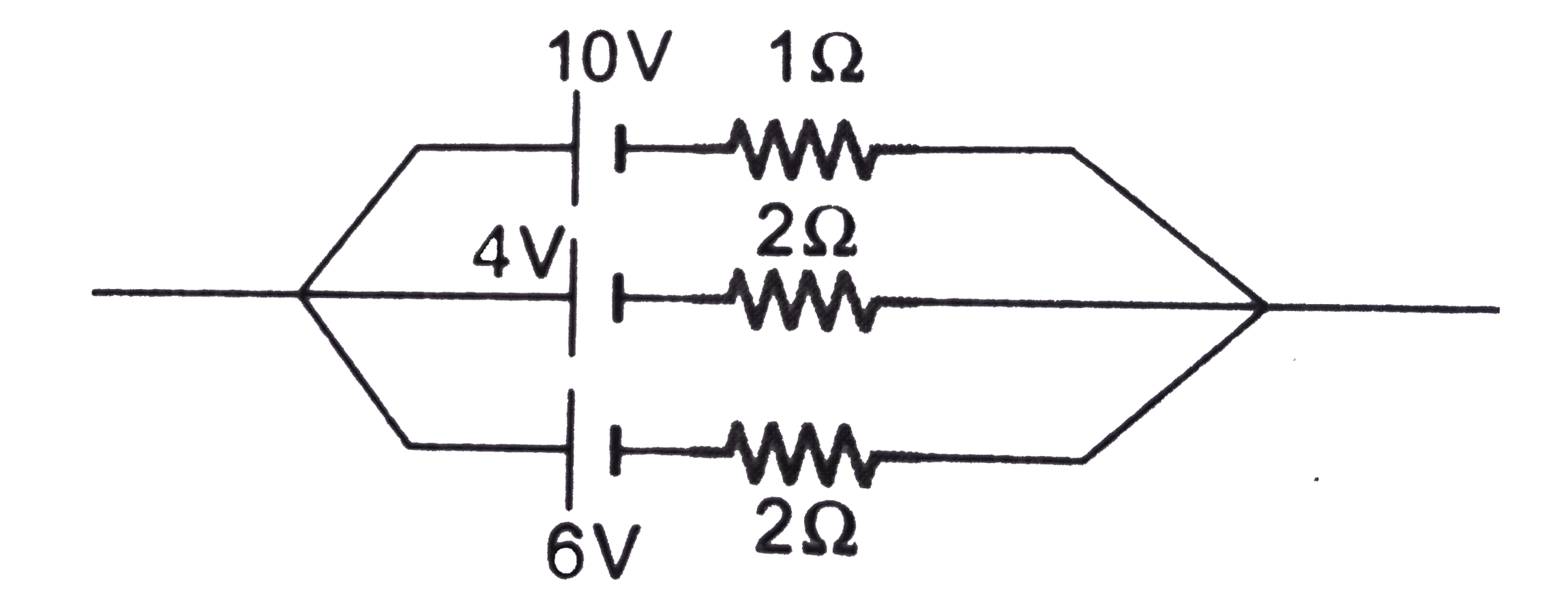Two nonideal batteries are connected in parallel. Consider the following statements:
(A)The equivalent emf is smaller than either of the two emfs.
(B) The equivalent internal resistance is smaller than either of the two internal resistances.
The equivalent emf is smaller than either of the two emfs
The equivalent5 internal resistance is smaler than either of the two internal resistances
B is correct b ut A is wrong
both A are B are wrong
The correct Answer is:3
Step by step video, text & image solution for Two nonideal batteries are connected in parallel. Consider the following statements: (A)The equivalent emf is smaller than either of the two emfs. (B) The equivalent internal resistance is smaller than either of the two internal resistances. by Physics experts to help you in doubts & scoring excellent marks in Class 12 exams.
Topper's Solved these Questions
Similar Questions
the nonideal batteries are connected in series. Consider the following statements :
(A)The equivalent emf is larger than either of the two emfs.
(B) the equivalent internal resistances is smaller than either of the two internal resistances.View SolutionIf three cell are connected in parallel then equivalent emf……. and equivalent internal resistance is …..
 View Solution
View Solution
Knowledge Check
- Question 1 - Select One
Two non-metal batteries are connected, in parallel. Consider the following statements.
(i) The equivalent emf is smaller than either of the two emfs.
(ii) The equivalent internal resistance is smaller than either of the two internal resistances.ABoth (i) and (ii) are correctB(i) is correct but (ii) is wrongC(ii) is correct but (i) is wrongDBoth (i) and (ii) are wrong - Question 2 - Select One
Two non-metal batteries are connected, in parallel. Consider the following statements.
(i) The equivalent emf is smaller than either of the two emfs.
(ii) The equivalent internal resistance is smaller than either of the two internal resistances.ABoth (i) and (ii) are correctB(i) is correct but (ii) is wrongC(ii) is correct but (i) is wrongDBoth (i) and (ii) are wrong - Question 3 - Select One
Two non-ideal identical batteries are connected in parallel. Consider the following statements
(i) The equivalent e.m.f. is smaller than either of the two e.m.f.s
(ii) The equivalent internal resistance is smaller than either of the two internal resistancesABoth (i) and (ii) are correctB(i) is correct but (ii) is wrongC(ii) is correct but (i) is wrongDBoth (i) and (ii) are wrong
Find the equivalent emf and internal resistance of the arrangement shown in figure.
 View Solution
View SolutionIf two equal resistances are connected in parallel the equivalent resistance is halved.
View SolutionAssertion : Two non-ideal batteries are connected in parallel with same polarities on same: side. The equivalent emf is smaller than either of the two emfs.
Reason : Two non-ideal batteries are connected in parallel, the equivalent inter resistance is smaller than either of the two internal resistances.View SolutionIf n cells each of emf E and internal resistance are connected in parallel, then the total emf and internal resistances will be
View SolutionThe equivalent resistance of two resistors connected in series 6Ω and their parallel equivalent resistance is 43Ω. What are the value of resistance?
View Solution

